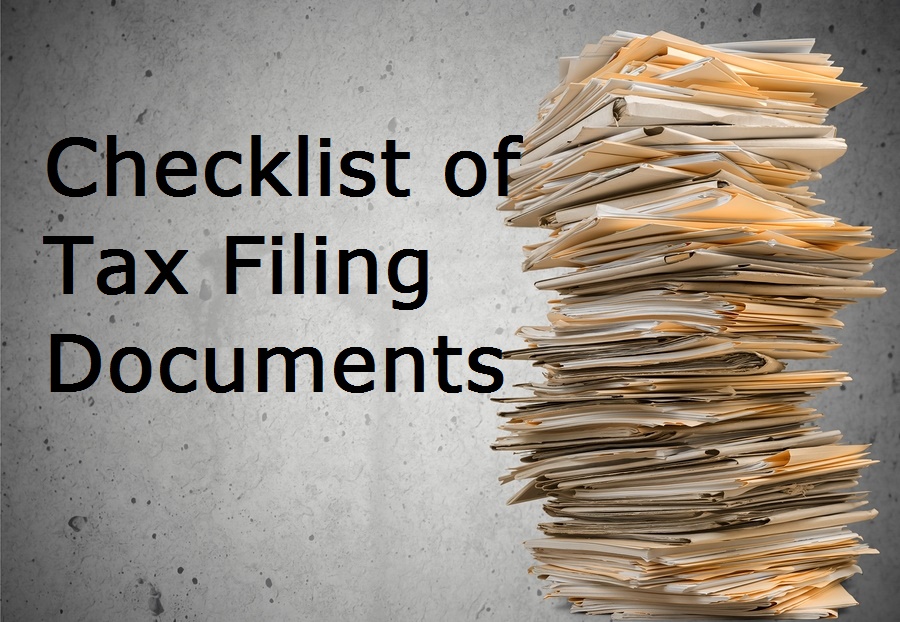
It helps to have all of your tax paperwork together before you start preparing your return.
It’s that time of the year again when we get to file our tax returns. If you’re expecting a refund, you’re probably anxious to get all your paperwork together so that you can file. For those of you who expect to pay, you’re probably not too thrilled about it. Whether you’re hiring a professional or preparing your own return, make sure you have all of your paperwork together before you start.
Here’s a list of some of the more common documents associated with filing. Not every person will have every form, but this list should just help jog your memory so that you don’t forget something you need. The list:
- W-2 wage and income statement – that’s your statement of wages, you’ll need a W-2 for each job you held. For lots of people, this is the only thing you need for filing your return. Make sure you have all of your W2s though; the most common problem is that Christmas season job part-time you had last year where you got paid in January of this year. Make sure you get all of your W2s before filing to avoid an IRS letter.
- W-2G is for gambling income. The W2G is the second most frequently lost tax form (only the Social Security SSA-1099 beats it.) If you’ve received one of these statements, you need to include it on your tax return. If you don’t, you will get a letter from the IRS. Gambling losses, up to the amount of winnings, can be deducted on your Schedule A. The catch is, you have to report it. You can’t just leave it off if it’s deductible.
- You need all of your 1099 forms – there are several types:
- 1099-INT for interest – you get this from your bank. If you earned less than $10 in interest, you probably will not get one
- 1099-DIV for dividends – you’ll get this from stocks you own. Sometimes they’ll come from a broker (like Edward Jones) and sometimes they’ll come straight from the stock issuing company (like Ameren).
- 1099-B for sale of securities – and this is going to be different this year. The laws about reporting stock sales have changed so don’t be surprised if your report is looking a little different. Some companies (like Edward Jones) send out a combined form that has your 1099-INT, 1099-DIV and 1099-B all in one statement and it can be 12 or 20 pages long, or longer. Be sure to give all of the pages to your tax preparer – if you don’t, you’re cheating yourself out of your own money.
- 1099-R for annuities, pensions and other retirement plan withdrawals—once again, even if your pension isn’t taxable, you need to report it on your tax return.
- 1099-G is for government payments like a state tax refund or unemployment benefits. If you live in Missouri, the state doesn’t send you a 1099G for your refund anymore; you have to go online to get it. Here’s the website: 1099G
- 1099 MISC is for miscellaneous income, like commissions or non-employee compensation. If you have income shown in box 7, you’ll be required to file a Schedule C for self employment income.
- SSA-1099 is for Social Security income – a note about the SSA 1099 form: it has to be the most frequently lost form on the planet. It’s usually the first one mailed out and I think it kind of gets lost in the shuffle. If you receive Social Security benefits, or are assisting someone who does, please make sure that this form is included with the other tax documents. For some people, it’s not taxable – but you need to include the figures from this form when preparing your taxes to determine if it is taxable or not. You get the 1099SSA form at about the same time that you get the information about what your benefits will be for the next year. You need the 1099SSA to do your taxes, not the future benefits statement.
- 1098 tells how much interest you paid on your mortgage—important for itemizing deductions
- 1098-E shows interest paid on a student loan—so you can claim a student loan interest deduction
- 1098-T shows the amount of tuition paid at an educational institution–you need this to claim those college tax credits
- If you purchased a new home this year, you’ll want to have a copy of your settlement statement—there are little things that might help with your deductions
- K-1 forms – if you are a member of a partnership, joint venture, S corporation, estate or trust. Those forms aren’t required to be completed until March 15th (partnerships not until April 15th) so you may not be able to file your personal return before then. It’s a good idea to make your tax appointment once you have all of your other forms together. The K-1 information can be added at a later date.
And of course, you’ll want to have all the documents to support your deductions like real estate taxes, charitable contributions or deductible business expenses.
It’s a good idea to have a copy of last year’s return with you also.
Don’t forget to bring the social security cards for you and your children to your tax appointment.
One last thing—have a blank check so that you can use the routing and account numbers for direct depositing your refund.
Once you have everything together, you’re ready to go!
